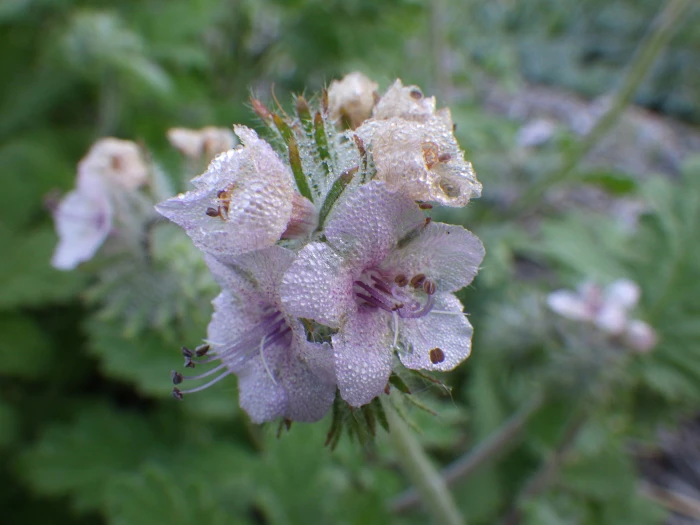Caterpillar Phacelia
(Phacelia cicutaria)
Caterpillar Phacelia (Phacelia cicutaria)
/
/

Zack Abbey
CC BY 4.0
Image By:
Zack Abbey
Recorded By:
Copyright:
CC BY 4.0
Copyright Notice:
Photo by: Zack Abbey | License Type: CC BY 4.0 | License URL: http://creativecommons.org/licenses/by/4.0/ | Rights Holder: Zack Abbey | Publisher: iNaturalist | Date Created: 2018-05-15T08:06:45-07:00 |



















































Estimated Native Range
Climate Requirements for Mentor, Ohio
| This Plant | Your Site | Plant Suitability for Your Location | ||
|---|---|---|---|---|
| • Precipitation | 3" - 95" | 38" | Aquatic | Aquatic |
| • High Temp. | 55°F - 110°F | 83°F | Your summer temperatures are normal for this plant. | Excellent |
| • Low Temp. | 7°F - 52°F | 19°F | Your winter temperatures are normal for this plant | Excellent |
This plant may not grow well at your location - your precipitation is too high.
Summary
Phacelia cicutaria, commonly known as Caterpillar Phacelia, is an annual herb that thrives in the chaparral, coastal sage scrub, and open woodlands of California and Baja California. It typically grows to a height and width of 1-2 feet. The plant is notable for its coiled clusters of bell-shaped flowers, which bloom in shades of purple, cream, and white during the spring. The flowers are moderately showy and attract pollinators such as bees. The common name derives from the flower clusters’ resemblance to caterpillars.
Caterpillar Phacelia is valued for its low water requirements and ability to thrive in well-drained soils, making it an excellent choice for drought-tolerant gardens and xeriscaping. It is used in native plant gardens, wildlife habitats, and for ecological restoration projects. This plant is also appreciated for its ease of maintenance and ability to adapt to full sun or partial shade. While it is not typically troubled by serious pests or diseases, overwatering can lead to root rot. Caterpillar Phacelia can be propagated by seeds, which may benefit from treatment with charred wood extracts to enhance germination.CC BY-SA 4.0
Caterpillar Phacelia is valued for its low water requirements and ability to thrive in well-drained soils, making it an excellent choice for drought-tolerant gardens and xeriscaping. It is used in native plant gardens, wildlife habitats, and for ecological restoration projects. This plant is also appreciated for its ease of maintenance and ability to adapt to full sun or partial shade. While it is not typically troubled by serious pests or diseases, overwatering can lead to root rot. Caterpillar Phacelia can be propagated by seeds, which may benefit from treatment with charred wood extracts to enhance germination.CC BY-SA 4.0
Plant Description
- Plant Type: Herb
- Height: 1-2 feet
- Width: 1-2 feet
- Growth Rate: Moderate
- Flower Color: Purple, Cream, White
- Flowering Season: Spring
- Leaf Retention:
Growth Requirements
- Sun: Full Sun, Part Shade
- Water: Low
- Drainage: Fast
Common Uses
Bee Garden, Bird Garden, Butterfly Garden, Drought Tolerant, Low Maintenance
Natural Habitat
Chaparral, coastal sage scrub, and open woodlands of California and Baja California
Other Names
Common Names: Caterpillar Scorpionweed
Scientific Names: Phacelia cicutaria, Phacelia cicutaria var. cicutaria, Phacelia hispida var. cicutaria
GBIF Accepted Name: Phacelia cicutaria Greene